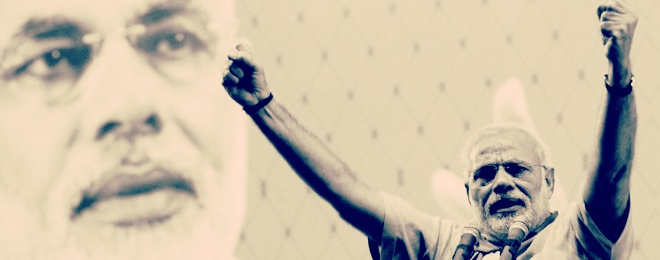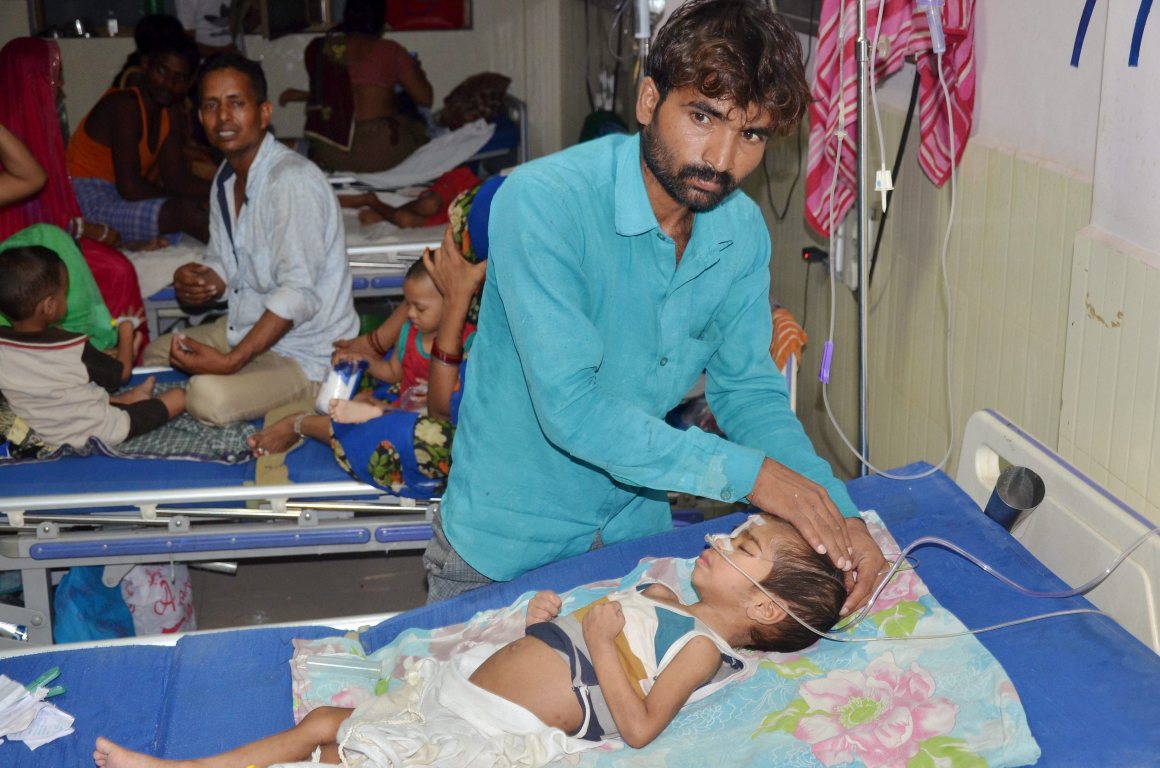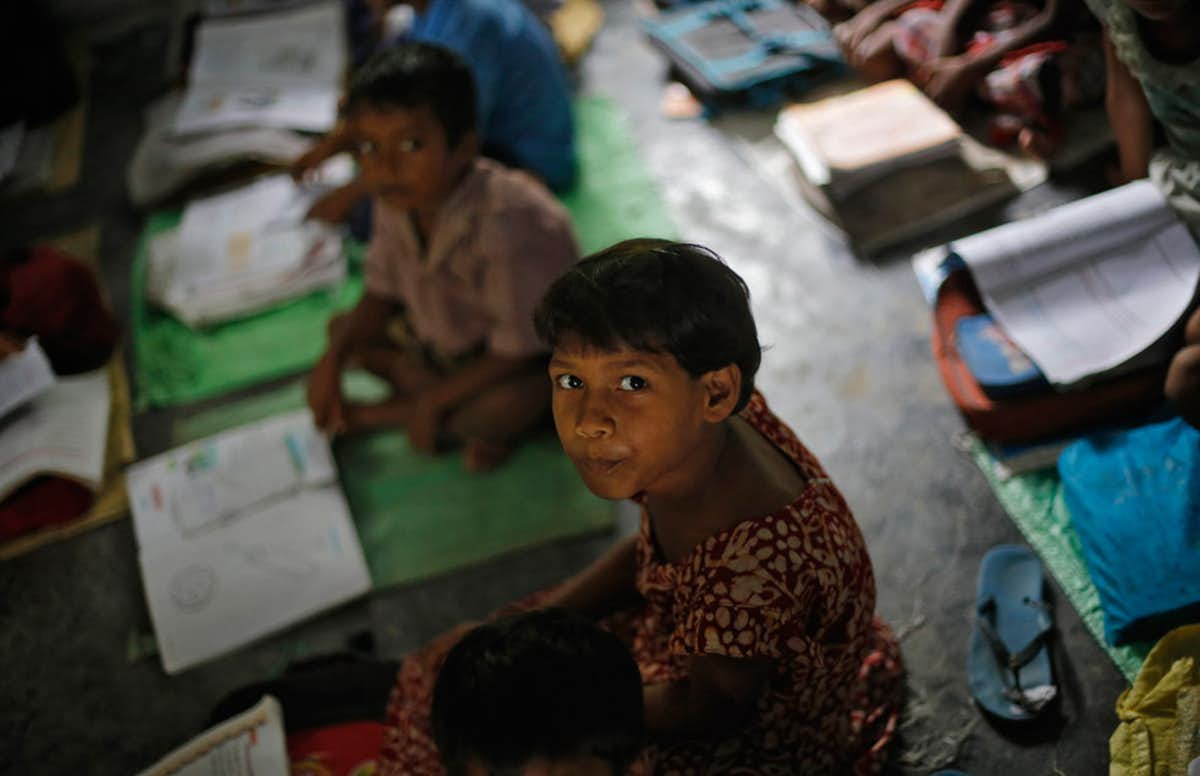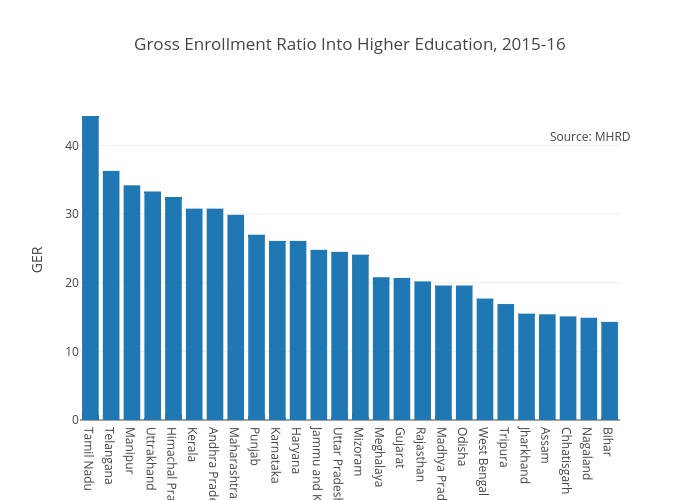
It’s hard to look at any measure of data and argue that southern states need to catch up with any BJP-ruled state. If anything, it’s Modi and his chief ministers who need to learn from Karnataka.

Note: Bari oLu Modi was a hashtag that trended on Twitter in response to Narendra Modi’s comments on Karnataka. It means ‘All lies, Modi’. Bari oLu comes from the chorus of a popular Kannada song, shot on actor Uppi/Upendra.
Politicians from the Bharatiya Janata Party have recently made speeches and comments on southern states – particularly Kerala and Karnataka – about how they aren’t developed, and how the BJP would bring development to them or that these southern states should catch up with the BJP-ruled states.
Uttar Pradesh chief minister Adityanath recently commented on Kerala’s health system; it was so absurd that no one took it as anything but a farce. After all, Kerala is a leader when it comes to health indicators, not just in India, but in all of the developing world. The infant mortality rate (IMR), an accepted measure of health systems in developing societies, tells the story of divergence between Kerala and Uttar Pradesh. Kerala has an IMR of six. That’s better than most Organisation for Economic Co-operation and Development (OECD) countries. Uttar Pradesh has an IMR of 64. That’s as bad as the newly-formed, war-ravaged and impoverished nation of South Sudan.
Surely, the no-nonsense, development-focused chief minister of Uttar Pradesh would look to learn from Kerala on how to save children from dying. Is being oblivious to reality, policy performance and actual governance an Adityanath-specific problem? Sadly, India’s prime minister confirmed that this is how the BJP’s top brass thinks.

In a recent rally in Karnataka, Prime Minister Narendra Modi said the state should catch up with other developed states (possibly implying his home state of Gujarat and other BJP-ruled states like Chhattisgarh and Rajasthan). However, the fact is that Karnataka is not only more developed than Gujarat in almost every measurable metric, it is also better governed in terms of working on the metrics that matter.
When Modi took over as the chief minister of Gujarat in 2002, the state was richer than Karnataka – both in absolute and per capita terms (NSDP). By the time he left office, Karnataka had overtaken Gujarat in both absolute and per capita terms. In other words, Modi inherited a state that was richer than Karnataka and left behind a state that was poorer. Surely, that’s not development even by his own narrow definition of what development means.
BJP politicians have spoken with pride about the roads of Gujarat. Recently, the chief minister of Madhya Pradesh, Shivraj Singh Chouhan, claimed that the roads of his state were better than those in Washington DC. If he had claimed that the roads in Madhya Pradesh were in better condition than in Gujarat, it would still have been a preposterous suggestion.
The length of roads under the Public Works Department (about half the road length in a state, on average) in Karnataka grew 31% between 2008 and 2013, in comparison with 8% in Gujarat and negative 19% in Madhya Pradesh.
Let us consider other crucial factors of development. We know that both Kerala and Karnataka have a lower IMR than any BJP governed state. But a low IMR isn’t achieved magically. Institutional births are the best predictors of a low IMR. Likewise, women with a Body Mass Index of less than 18.5 (suggesting malnutrition) are a high-risk group for both infant and maternal mortality. This is where governments can intervene and improve access to primary health centres or provide better access to food via the Public Distribution System (PDS). Karnataka performs much better than Gujarat on both these metrics.
Female literacy leads to a lower fertility rate, higher female labour force participation, higher economic growth, lower IMR/maternal mortality rate (MMR), less skewed sex ratio and a host of other benefits. Women with ten years of schooling form the bedrock of any such improvement. In the ten-year period between 2005-06 and 2015-16, Gujarat has caught up with Uttar Pradesh, while Karnataka has widened the gap and moved much farther ahead in terms of sending girls to schools and retaining them. Kerala, as always, is a leader in these metrics and is much ahead of Gujarat and Uttar Pradesh.
Karnataka consistently outperforms Gujarat in access to menstrual hygiene products.

The gross enrolment ratio in higher education – a metric that measures how many teenagers who finish school go on to join colleges – again puts the southern states far ahead of any BJP state. Gujarat and Uttar Pradesh are far behind than the southern states in this regard too.
Gender party index (GPI) is the quotient of the number of females by the number of males enrolled in a given stage of education. The overall figure for Karnataka (0.99) is ahead of the BJP-ruled states – Gujarat (0.8), Rajasthan (0.85), Madhya Pradesh (0.85) and Chhattisgarh (0.93). Interestingly, Karnataka is behind Uttar Pradesh, which is at 1.03 (falling from 1.14 in 2010-11). Gujarat’s GPI has remained constant (at 0.8).
During Modi’s time as the chief minister of Gujarat and immediately after, several important development indicators dropped. Between 2005 and 2014, the shortfall of surgeons, obstetrician and gynaecologists, physicians and paediatricians rose by 66% in Gujarat, while it dropped by 1% in Karnataka. The shortfall of senior doctors per 1000 healthcare institutions in Gujarat in 2005 was 115 – 3.6 times of that of Karnataka at the same time.
Redistributive effects of electoral competitiveness have combined with progressive thinking – namely, greater social sector expenditure per capita – to enable Karnataka to make big leaps. One area where progressive thinking is visible is the investment in tertiary education (in addition to primary education). After Andhra Pradesh and Puducherry, Karnataka has the third highest number of colleges amongst all states and Union territories per lakh of its population. At 50 colleges per one lakh people, it is nearly the twice of Gujarat (28). In the past five years (2010-2015), Karnataka’s colleges per lakh have grown at 13.3% in comparison with Gujarat at 5.75%. Gujarat keeps company with its BJP-ruled counterparts – Chhattisgarh (20), Madhya Pradesh (23) and Rajasthan (29).
Hence, to say that Kerala or Karnataka must look up to Gujarat, Chhattisgarh, Madhya Pradesh or Rajasthan is laughable. Vietnam, despite being poorer than India for instance, manages to have better metrics in basic health and education. That is one country our southern states can look up to. If anything, it’s Modi and the BJP chief ministers who need to learn from Karnataka. Bari oLu Modi.
Sarayu Natarajan is a doctoral candidate at the King’s India Institute, King’s College London and likes learning about politics and policy. Nilakantan R.S. works as a data scientist for a tech start-up and looks at politics from that vantage point.


